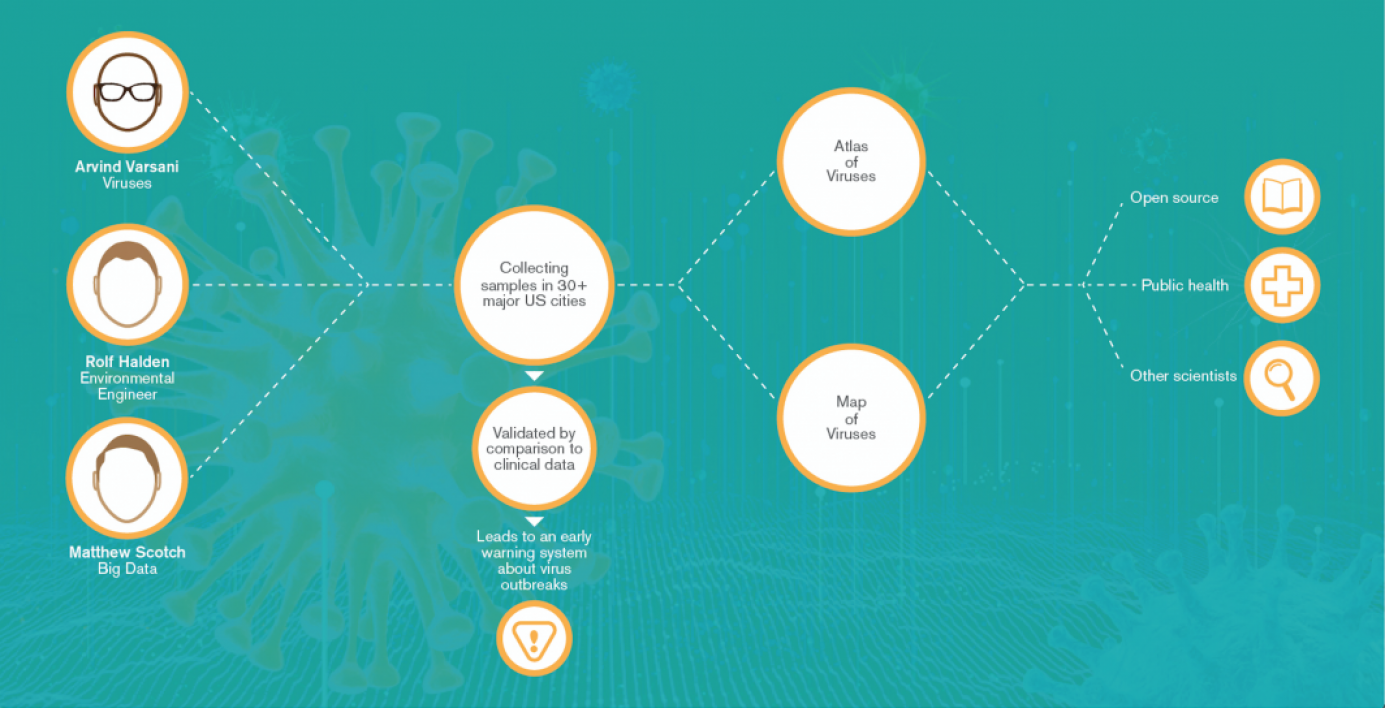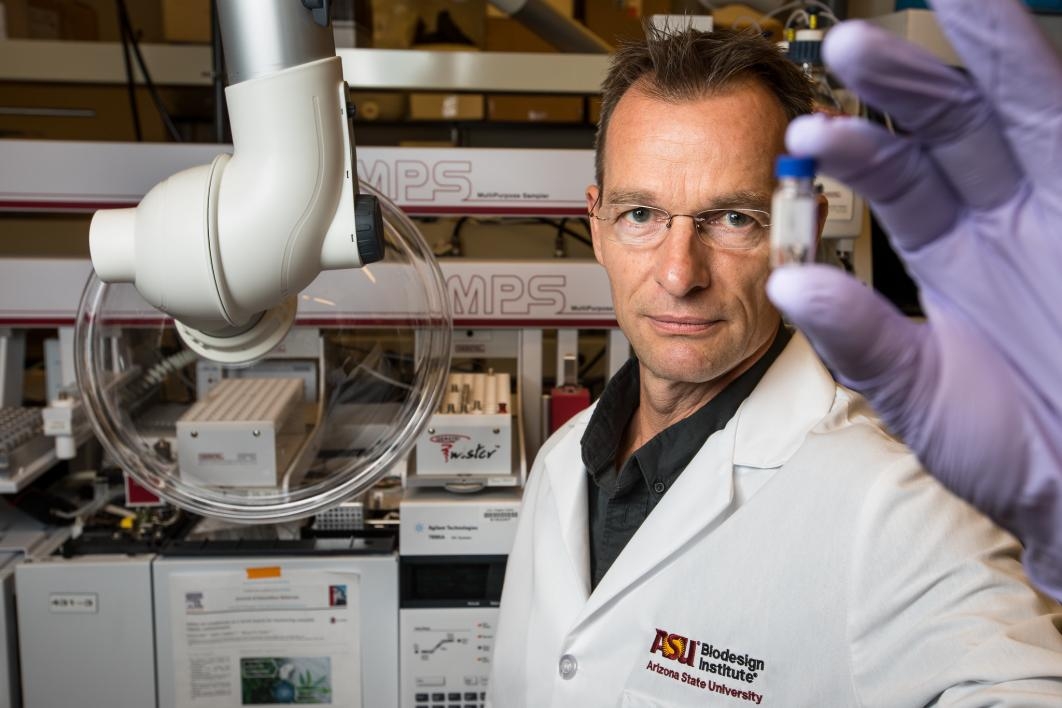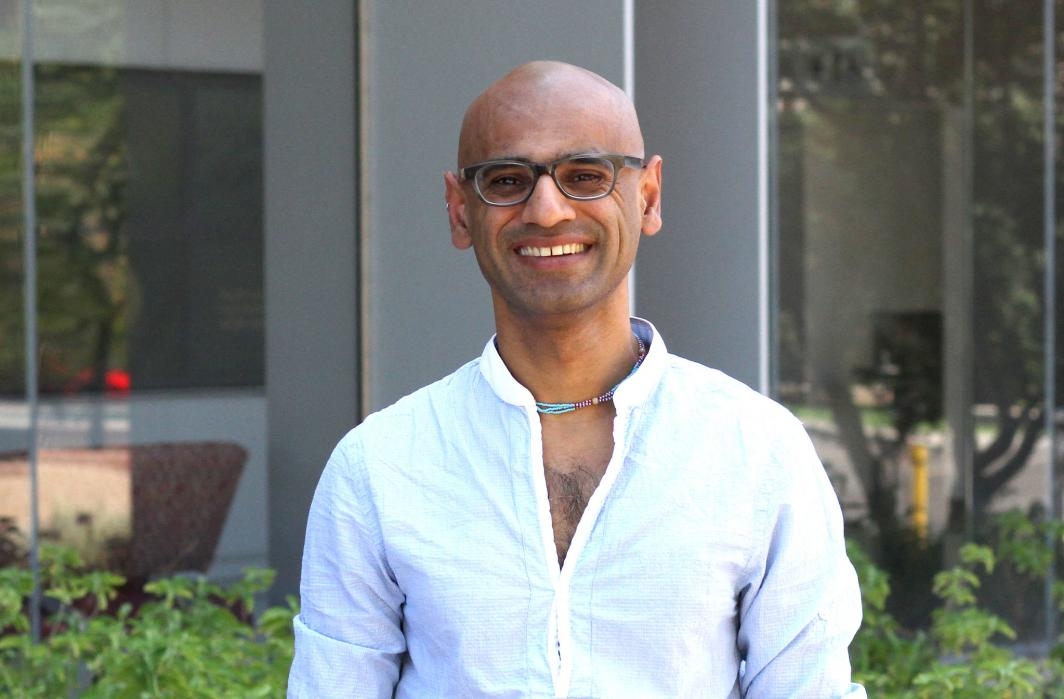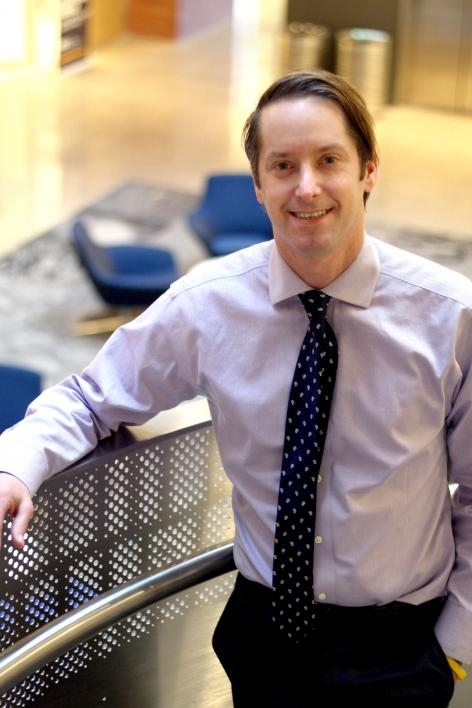Biodesign receives $1.5 million to develop early warning system for flu outbreaks
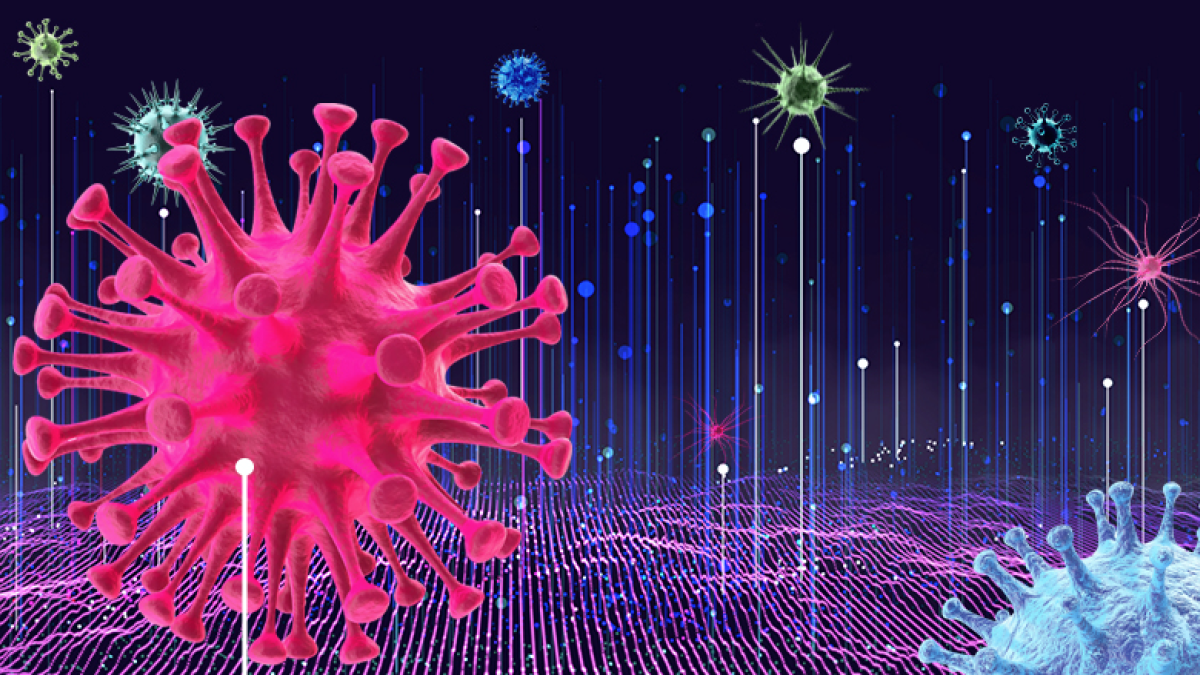
Experts in environmental health, bioinformatics and virology are teaming up to create a map to track viruses and forecast outbreaks nationwide.
The microbial world of viruses is poised to attack. Viral, nonliving entities have the ability to infect you and spread to others, jumping from host to host to host. Unchecked, viral infections can spread through families and communities like wildfire.
With $1.53 million in support from the National Library of Medicine, three research teams from Arizona State University’s Biodesign Institute are bringing their distinct areas of expertise to answer the question, “How can we improve our ability to predict viral outbreaks?”
Their plan is essentially twofold: first, to create an accessible online database that catalogues and characterizes viruses nationwide; and second, to develop a map of the United States that tracks where and how viruses exist and travel across the nation.
According to the Centers for Disease Control and Prevention, approximately 79,000 people died last year from influenza in the United States, 960,000 were hospitalized and 49 million individuals were infected. Ultimately, the goal is to provide data that will help communities and public health officials develop an early warning system that will forecast outbreaks and pandemics. First on their viral hit list is influenza, more commonly known as the flu.
Protecting public health
The teams will track the presence of viruses at wastewater plants and medical clinics. In doing so, they will be developing much more than a map. The database will characterize the viruses they find, identify new viruses and provide information that shows infectious trends for humans, animals, plants and bacteria.
Molecular virologist Arvind Varsani, environmental health engineer Rolf Halden and biomedical informaticist and epidemiologist Matthew Scotch — all researchers at the Biodesign Institute — will combine their scientific skills for the greater good. This open-access viral databank will provide a multidimensional view of viruses and their infectious trends, allowing researchers to look at viruses through a whole new lens.
“This is an excellent example of the spirit of discovery at Biodesign,” said Joshua LaBaer, executive director of the Biodesign Institute. “Bringing multiple scientific disciplines together is key to advancing knowledge and developing solutions to some of life’s most intractable problems.”
“Previously, we didn’t have the technology or computer power to accomplish a study of this size and ambition,” said Halden, director of the Biodesign Center for Environmental Health Engineering, and a professor in the School of Sustainable Engineering and the Built Environment. “However, it is a new era. We now have advanced technology in big data and metagenomic sequencing. Today, bioinformatics experts are able to manage tidal waves of data.”
Varsani, a researcher in the Biodesign Center for Fundamental and Applied Microbiomics and faculty in the School of Life Sciences, specializes in extracting DNA from whole viruses in a way that can identify and describe viruses in ecosystems.
“We aim to add important details that are currently missing from existing viral databases,” Varsani said.
The new study will rely on samples from about 30 municipal wastewater facilities — facilities that are already participating in Halden’s Human Health Observatory project. Halden launched the Human Health Observatory at ASU to take on public health challenges, from toxic pollutants to human pathogens. As part of this project, Halden’s team pulls samples from more than 250 wastewater sites across the nation. With this new grant, Halden and his team will extend the sample collection, and in the process, identify and track viruses, both known and yet to be discovered. With Varsani leading the data analysis, over 3,000 new viruses already have been detected by the team.
Taking viral information to the bank
Locally, the city of Tempe will participate in the project, with ASU Heath Services recruiting patients to provide nasal samples during their clinic visits. The samples will be compared to the composite samples that Halden collects from the local wastewater treatment facility.
Scotch’s expertise in big data is essential to the project, as the amount of data collected will be massive.
“I am creating and categorizing a custom database of all of the viruses found,” said Scotch, assistant director of the Biodesign Center for Environmental Health Engineering and an associate professor in the College of Health Solutions. “The database will allow people to search through it to compare and contrast information about any particular virus, including those that infect humans, plants or animals.”
“Our knowledge of viruses is good, but it is narrow,” Varsani said. “We only know a fraction about this vast world of viruses that exists around us. This is unfortunate since it is the most abundant biological entity on the planet.”
The atlas of viruses seeks to remedy this problem, providing researchers and public health experts access to much-needed information that will help forecast viral outbreaks and provide the opportunity to intervene before public health crises occur.
The researchers anticipate that in time, they will be able to increase their sampling capacity to offer coverage to all 50 states. Interested municipalities are encouraged to contact the team at HHO@asu.edu.
Flushing them out
“We get a 24-hour composite sample from participating wastewater treatment facilities,” Halden said. “This liquid sample contains the chemistry of the whole city for a full day, revealing the identity of pollutants present in the community, demonstrating as human metabolites the ongoing exposure of humans to these pollutants, and also allowing us to identify in participating municipalities the presence and quantity of biohazards — bacteria, viruses, just about anything.”
“We acquire a sample of wastewater that has accumulated over a 24-hour period from a wastewater treatment facility,” Halden said. “From this, we can test the wastewater for substances that have been metabolized by the community, including chemical pollutants and pathogens such as viruses, bacteria or other biohazards to which the community has been exposed.”
The teams will be paying special attention to influenza. They are interested in confirming that what they see with this virus in the wastewater is reflective of infectious trends recorded by public health agencies. To test this, Scotch will obtain comparable samples from healthy and infected patients in clinical settings.
“This clinical study is our benchmark. If we see that same trend in the wastewater, then it will be considered an accurate, predictive tool,” Varsani said.
“Basically, we will be identifying a new way to monitor infectious disease burdens in populations in a way that could identify outbreaks sooner,” Scotch said. “This can lead to early intervention, which could also lead to reduced risk of widespread infection, potentially halting epidemics before they occur.” The wastewater samples may provide important information missed in traditional monitoring programs.
Filling the viral void
Although it is universally accepted that viruses have the ability to make us sick, Varsani believes that this study will change our preconceived biases about their other roles.
“By regulating host populations in ecosystems, viruses can be beneficial,” he said.
“This study will give us a better idea of what viruses are out there. We are gaining true insight into our own ecosystem,” Varsani said. “The techniques we establish here will lay the groundwork for future researchers. We will have a much better database of viruses than we have ever had. We probably can’t fill the 99% viral void, but if we can add just 2% more information, that is still a long way from where we were are right now, and that is progress.”
Researchers anticipate that the first data will become publicly available next year.
Written by Christine Lewis and Dianne Price
More Science and technology
2 ASU faculty elected as fellows to National Academy of Inventors
Arizona State University faculty members Bertram Jacobs and Klaus Lackner have been elected as fellows to the National…

Harvesting satellite insights for Maui County farmers
Food sovereignty can refer to having access to culturally significant foods, but Noa Kekuewa Lincoln believes it goes farther…

Google grant creates AI research paths for underserved students
Top tech companies like Google say they are eager to encourage women and members of historically underrepresented groups to…
